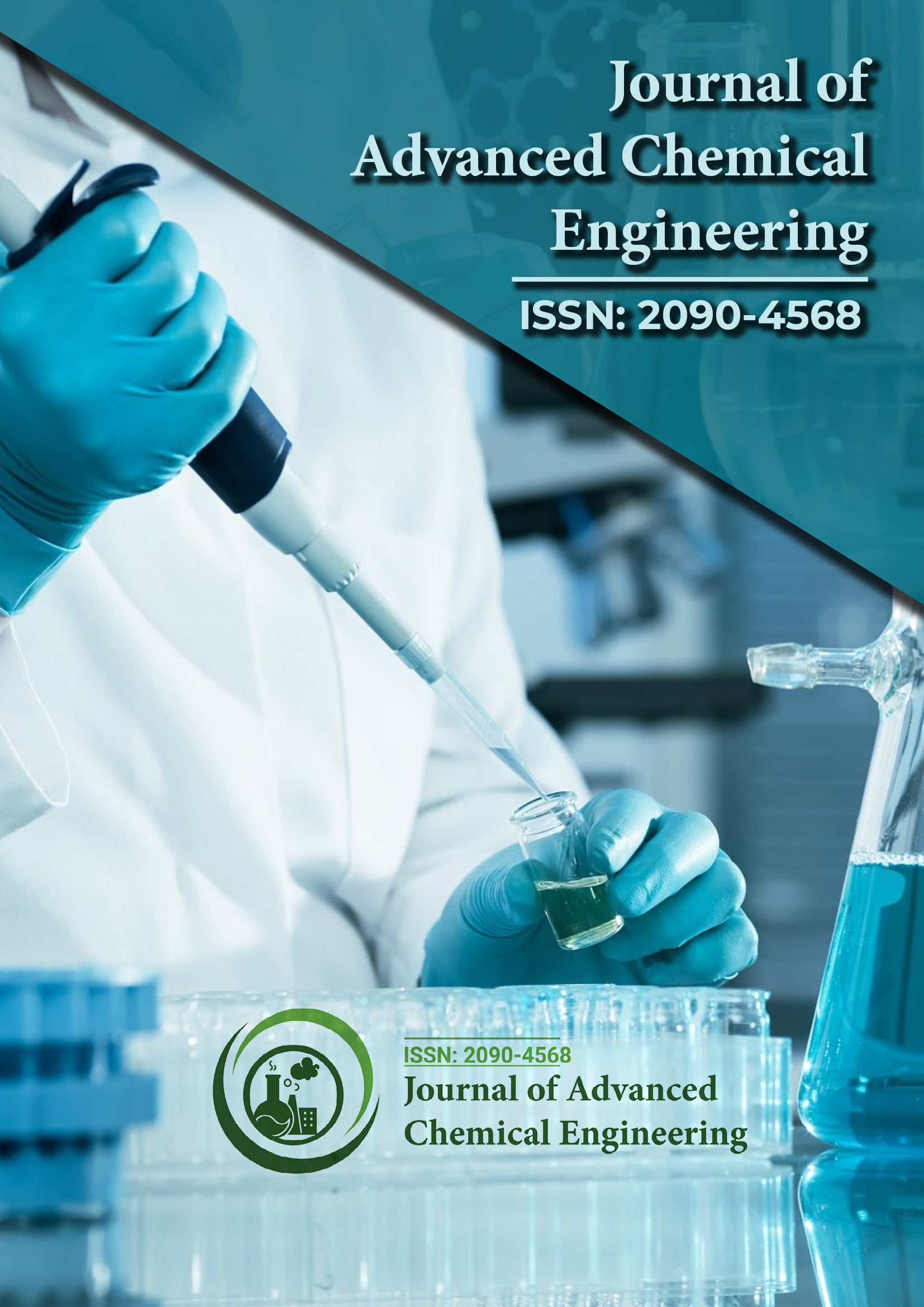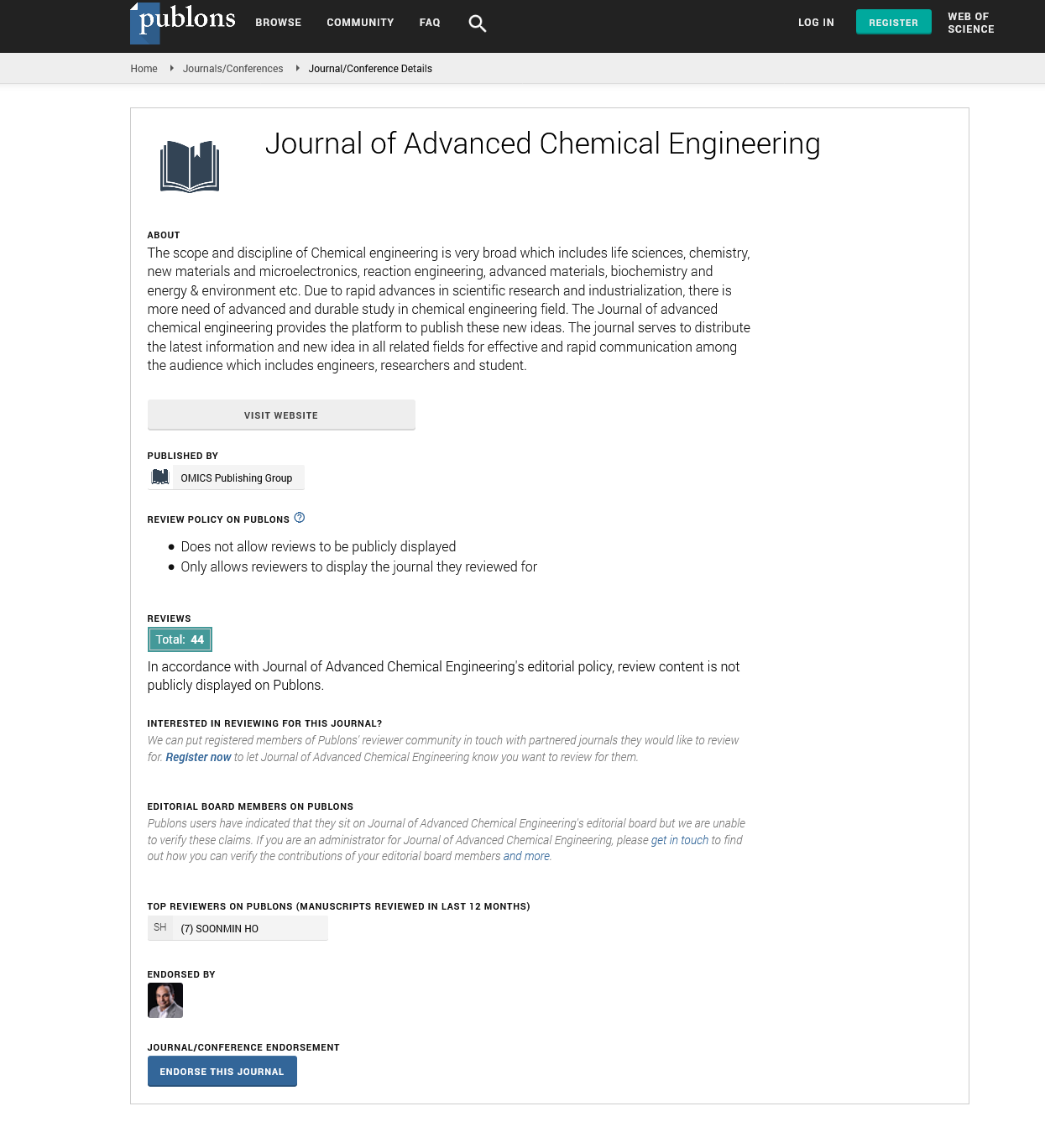Indexed In
- Open J Gate
- Genamics JournalSeek
- Smithers Rapra
- RefSeek
- Directory of Research Journal Indexing (DRJI)
- Hamdard University
- EBSCO A-Z
- OCLC- WorldCat
- Scholarsteer
- Publons
- Geneva Foundation for Medical Education and Research
- Google Scholar
Useful Links
Share This Page
Journal Flyer

Open Access Journals
- Agri and Aquaculture
- Biochemistry
- Bioinformatics & Systems Biology
- Business & Management
- Chemistry
- Clinical Sciences
- Engineering
- Food & Nutrition
- General Science
- Genetics & Molecular Biology
- Immunology & Microbiology
- Medical Sciences
- Neuroscience & Psychology
- Nursing & Health Care
- Pharmaceutical Sciences
Intriguing aspects of non-innocent ligands in transition-metal catalyst
Joint Event on World Chemistry, Catalysis & Petro Engineering
MAY 13-14, 2019 | LONDON, UK
Michael B. Hall
Texas A&M University, USA
Keynote: J Adv Chem Eng
Abstract:
Non-innocent ligands play important roles in a variety of catalytic reactions. However, the ambiguous nature of their electronic structure causes problem for the assignment of the metal’s oxidation state and for a clear-cut role of the metal in their reaction mechanisms. Nickel bis(dithiolene) complexes, which exist in three oxidation states [Ni(S2C2R2)2]n (n = 2-, 1-, 0), are all square-planar Ni(II) with redox active ligands. The neutral complex reacts with an alkene to produce the cis-interligand adduct, which upon reduction releases the alkene. Among the related ruthenium tris(thiolate) complexes, [Ru(dppbt)3]n (n = 1–, 0, 1+) (dppbt = diphenylphosphinobenzenethiolate), the most oxidized form also reacts with alkenes, a reaction attributed to thyil-diradical character involving two S atoms. Although it seems clear that [Ru(dppbt)3]1– is Ru(II) with three thiolate ligands, the nature of the most oxidized form, [Ru(dppbt)3]1+ appears elusive. High-level ab initio methods (CASSCF and CASPT2) predict its ground state electronic structure to be an open shell diradical singlet state with a Ru(III) (d5, S = 1/2) Antiferromagnetically (AF) coupled to a thiyl radical (S = 1/2), rather than the previous description based on a dithiyl state involving two S 3p orbitals. These new results provide animproved understanding of this system’s experimental behavior. Furthermore, the related Re complexes [Re(dppbt)3]n (n = 0, 1+, 2+) span two additional higher oxidation states. High-level ab initio methods confirm a CS singlet with a Re(III) (d4, S = 0) center as the ground state of [Re(dppbt)3]0. Thus, this neutral Re species has considerably less thiyl radical character than the valence isoelectronic [Ru(dppbt)3]1+. On the other hand, the more oxidized derivatives [Re(dppbt)3]1+ and[Re(dppbt)3]2+ show significant metal-stabilized thiyl radical character; both have major contributions from Re(III) (d4, S = 1) centers AF coupled to thiyl- and dithiyldppbt ligands. These findings are consistent with the experimental chemistry as [Ru(dppbt)3]1+, [Re(dppbt)3]1+, and[Re(dppbt)3]2+ can add ethylene to form the new C-S bonds, but [Re(dppbt)3]0 cannot. These complexes have been extensively studies as electrochemical catalysts for both proton reduction and H2 oxidation. The interesting protonated intermediate, [HRe(dppbt)3]1+, has been studied by x-ray crystallography that shows a protonated S. However, DFT calculations and the experimental structure appear to disagree on which S is actually protonated.
Biography :
Professor Hall obtained his B.S. degree in chemistry from Juniata College. Following his Ph.D. work with Richard Fenske at the University of Wisconsin, Madison, he was awarded an AEI postdoctoral fellowship in theoretical chemistry at the University of Manchester, England, where he studied with Ian Hillier. Professor Hall’s career at Texas A&M University began in 1975 when he accepted an appointment as Assistant Professor of Chemistry. He was promoted to Associate Professor in 1980 and Professor in 1983. He served as Head of the Department from 1986 to 1994, and as Executive Associate Dean in the College of Science from 1997 to 2017. He founded and has directed the Laboratory of Molecular Simulation since 1997 and was named Davidson Professor of Science in 2004. His research interests are directed toward understanding chemical structures, reactions, and catalysis through state-of-the-art quantum calculations. Applications transitionmetal activation of carbon-hydrogen and carbon-carbon bonds, and biocatalysis by metalloenzymes are among his current interests. He has served on the editorial advisory board of the Organometallics and Theoretical Chemistry Accounts; and on the advisory Board of the Center for Molecular Electrocatalysis an EFRC center at Pacific Northwest National Laboratory.
E-mail: mbhall@tamu.edu

